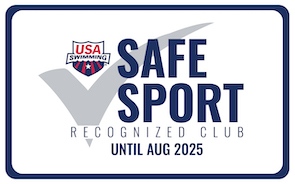Paseo News and Notes March 2024
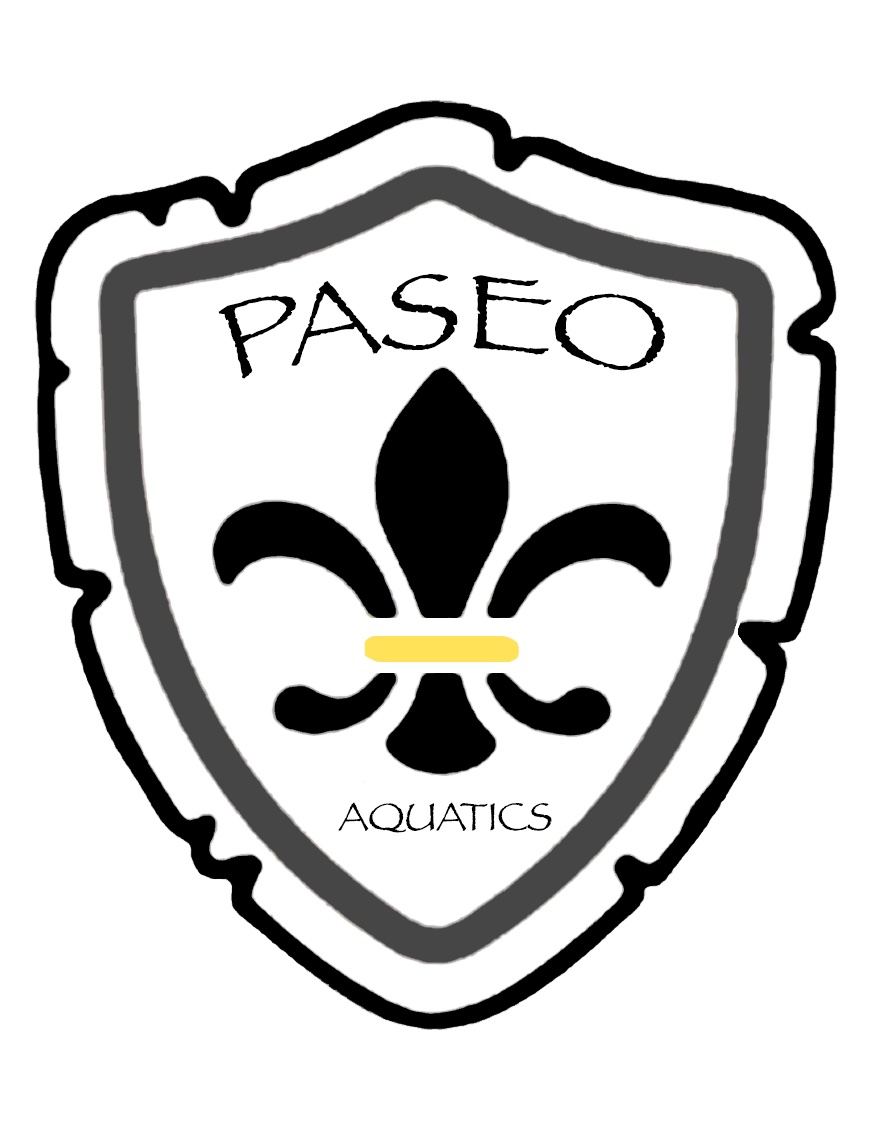
PASEO AQUATICS NEWS & NOTES
March 2024
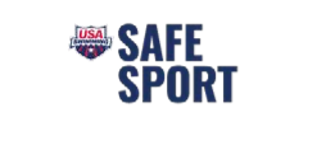
IF you see ANYTHING that causes concern, report it [email protected]
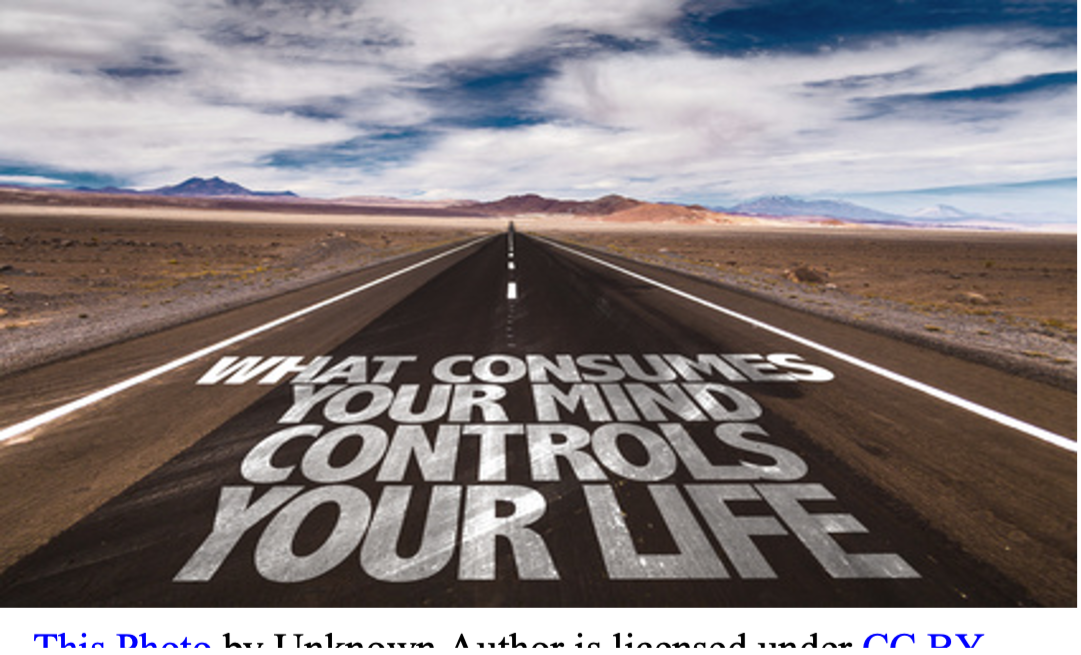
Each newsletter we will offer a segment on education, hoping to share insight and information on becoming the best possible parent-of-a-club-swimmer you can be. This month’s article helps both parent and swimmers about the 5 Hard Choices to Swim Successfully
https://www.swimmingworldmagazine.com/news/5-hard-choices-to-swim-successfully/

Enjoy this amazing video! We might be coaching Paseo Aquatics, but we truly are coaching for team USA.
https://www.youtube.com/watch?v=OV_vvcvps7g
Silver- Coach Trevor
Whenever I come into coaching a new group, I focus on three things: build relationships via some fun, technique, and sprint speed. This is based on a scientifically grounded approach. Let me explain.
First, fun. Having fun while working out is scientifically proven to make workouts easier and more engaging. It also releases the stress of elite competition. Smiling and laughing also releases various uplifting hormones, making the workout seem less intense as well as promoting better recovery. It’s also much more fun to coach when everyone is having fun. Lastly, it makes it easier to push the athletes, because I get on them with jokes, sarcasm, smiling and laughter.
Second, technique. Most people do not move through the water efficiently. By focusing on technique, we can get substantially faster with minimal loading. By minimizing drag and maximizing streamline, we increase velocity. The only way to do that is by working on technique under various stress loads that closely represent race performance. We must make ourselves flow better through the water. Think of the difference between a Tesla and an old school Semi-Truck. The smaller the drag coefficient, the better. The other ancillary benefit of this: most drills are kick based. So, by default, we are over-working our kick as well.
Third, speed. It won’t come as easily without technique. Want to break two minutes in a 200 Freestyle? Probably won’t happen if your best 100 Freestyle is still over one minute. Probably won’t happen if your best 50 Freestyle time is over 30 seconds. Also, your body needs to know what it feels like to swim at your goal times. Want to go 22 seconds in a 50 free? Teach your body what it feels like to swim at 22 seconds. How do we do this? With assistance such as fins and paddles.
What are the effects we are beginning to see?
1. Every athlete looks beautiful when they swim.
2. Every athlete has a great understanding of technical aspects of swimming.
3. Every athlete to date has PB in over half their events.
4. Any overwhelming majority (90%) dropped in something.
5. 16 athletes dropped in everything minus one event.
6. 4% average time drop across all athletes and events.
7. 6 athletes qualified for WAGs.
So, what did we learn in the Silver group?
Fun.
Stay Focused.
Be Ferocious.
We will start to incorporate land and water-based resistance training. Now that we have a better way to move through the water, it is time to teach the body how to move with more strength and power through this different, proper movement.
I view it through the same lens as land-based movement. Let me explain…
If my client cannot get their squat form correct, would it be responsible for me to let them load up the bar with weight? NO! The client’s squat form needs to be fixed through corrective exercise (essentially drills on land to fix a specific movement incompetency). Once addressed, I recheck to make sure they can do a BW squat slowly. If they can, then we move to normal speed BW squats. Then dumbbell squats. Then barbell squats. All the while, making sure form does not diminish.
This same principle applies to swimming. It’s basic anatomy and physiology.
Champs 1- Coach Eric
The first half of the season has been exceptional for the swimmers in the Champs 1 Group! I enjoyed seeing the progress of each athlete through the process. As the organization continues to strive for success, I am looking forward to bringing in the “test sets” within in the group.
The attendance has been strong and I look forward to seeing what spring swimming will bring.
Bronze – Coach Eric
Bronze Group has improved attendance and many swimmers from the group have achieved B and BB time standards! The group continues to contribute to the overall success of Paseo Aquatics Swim Team!
I am excited to bring the “test sets” into the bronze group as we push to futher develop the kids into strong confident swimmers. They all listen to instruction well and focus on stroke correction.
Discovery- Coach Harrison and Allison
These young children (10 and under) have diligently applied themselves. They're learning new swimming techniques, refining their strokes, and steadily improving their endurance to surpass 50 yards.
Shout out to Audrey Cross, Cara Shinnick, and Ryan Oualha!
Juniors 1 and 2- Coach Harrison and Allison
Despite enduring rain and winds, these swimmers have undergone rigorous training. They've pushed through to complete their workouts, and their dedication is reflected in their outstanding performance at swim meets, where they're not only having fun but also enhancing their techniques and achieving better times.
Shout out to Juniors 1: Raelynn Bingham, Aiden and Michael Bolokofsky, Ben Hadji, Adaleigh Nelson, and Leland Tsou!
Shout out to Juniors 2: Max Bautista, Brooke Buehler, Scarlett, Hudson, and Everett Griswold, Joshua Joseph, Elizabeth Leonidas, Gaby and Gilly Luna, Marisa Tam, Robbie Morrone and Camilla Nabiev!
Champs II- Coach Konrad
I officially completed my first whole year of coaching. The new year has brought many new faces, experience, and a different training system. There were many new challenges with athletes aging into tougher time standards. Here are a few takeaways and recognitions.
We became a bit more distance focused. Previously most of our talent was concentrated in the 11-12 age group but with athletes aging into 13-14, we had more swimmers begin competing in the stroke 200 events along with the 400 IM and distance free events. There were 38 first time swims for those events.
Additionally, our greatest improvements came in the 200 distance and 500 free events, averaging around 4-5% improvements across gender and age in contrast to the 2-3% cuts we saw in the 100 events. We also saw massive cuts of 4-5% on average in the 50 back and fly events.
In my mind this is a result of incorporating a focus of increasing workout totals across the season. Previously I would focus on increasing high intensity reps week over week to improve neurological adaptations but more distance was aimed at improving the athletes VO2max levels which would not only help them swim fast for longer but also prepare them for training at the next level.
Ultimately, we managed to qualify 21 athletes from Champs 2 into the Championship meets. I look forward to this continued progression as well as a new-found team wide philosophy of adding test sets to the group.
Senior 2 - Coach Chris and Coach Trevor
Championship season proved to be very successful for the group as a whole. We had many PB’s and lots of athletes progressing closer to their Sectional Standards. With most of the group within 10-15% of achieving that cut. In the pool, we spent much of the season focusing on increasing our VO2Max under the environment of different situational loading.
We shifted focus 2x per week to land base work where the mindset was on corrective movements and flexibility. As we progress forward into the season plan, Coach Trevor has put all athletes through a Functional Movement Screening test (FMS) where we get a solid baseline of where the athlete’s movements and restrictions are currently. From here Coach Trevor we will develop a specific movement program for them to work at home and meets. This supplementation is to go alongside with progression into strength and condition. Coach Trever’s expertise in this field is exciting for the team. He has been very pleased with the range of motion, technique and focus the seniors are displaying.
New to the seniors this year has been participating in a Mental Training course via 1 hour zoom meetings conducted by Coach Chris in conjunction with Dr Alan Goldberg’s courses. Dr G has worked with top athletes across all sports nationally and internationally. He is considered the premier leader in this field.
The athletes will learn to develop their “toolbox” to handle situational pressure. Then will learn how to handle goals and expectations from themselves or what others place upon them and when and where to use said goals and expectations for motivation, as well as rebounding from disappointments and last-minute negative thinking. The course has been a huge success so far and we will continue to nurture the mental growth of our top athletes until one day they can race in a “flow state” - free and clear from all the activity in the brain. Just swim. Nothing else.
We continue to hit the water with the focus on maintaining VO2Max while increasing power and speed output. Each day the athletes need to go to their mental toolbox as they push themselves hard through our rigorous test set progression. Really looking forward to HS championship season. The kids really have fun at these meets. Fun=Fast.

Hydration & Nutrition
By Coach Trevor
Water is the most vital thing that we consume on a (hopefully) daily basis.
Now, Some Data
The human body is 55 to 65% water, and it's in every part of your body, from your brain to your skeletal system.
How long can you live without food? An estimated 48 to 70 days.
How long can you live without water? No more than 48-72 hours.
But it makes sense. Why?
• Your cells are made of water.
• Your blood is made of water.
• Water delivers nutrients across your cell membranes.
• Water helps produce hormones and neurotransmitters.
• Water regulates your body temperature.
• The list goes on, and on, and on, and on, and on...you get the point.
Everything your body does requires water. Don't worry, I will discuss electrolytes too.
Dehydration and Heat Exhaustion
What is dehydration? A harmful reduction in the amount of water in the body.
What is heat exhaustion? A condition of fatigue and weakness, usually with normal body temperature, resulting from prolonged exposure to heat. Caused by dehydration.
How do these occur?
• You're not retaining enough water.
And/Or
• You're not drinking enough water. *You can also eat too much dry food*
What are the symptoms of dehydration?
• Feeling thirsty
• Feeling dizzy or lightheaded
• Feeling tired
• Dry mouth, lips and eyes
What are the symptoms of heat exhaustion?
• Tiredness
• Dizzy
• Headache
• Feeling sick or being sick
• Excessive sweating and skin becoming pale and clammy or getting a heat rash
• Cramps in the arms, legs and stomach
• Fast breathing or heartbeat
• A high temperature
• Being very thirsty
• Weakness
These both occur in as little as 30 minutes. Especially so on 100° and hotter days.
What can you do to help? I use the term pre-hydrated. Pre-Hydration is making sure you drink enough throughout your day so that all you have to do is increase the frequency of water intake before, during, and after exercise.
What's the minimum amount of water someone should drink?
As a general rule of thumb:
The minimum amount someone should be drinking is 50% of your body weight in fluid ounces.
For those that are active once, that percentage jumps to 75% of your weight.
For those that are active twice a day or active outside on 90° and hotter days, that percentage jumps again to 100% of our body weight in fluid ounces.
Using me as an example:
• Weight: 220 pounds.
• I drink from a 64 fluid ounce jug. A lot of you have probably seen me with it!
• 220 x .5 = 110 Fluid Ounces on days Sundays (my recovery days)
• If I am awake 16 hours, that's approximately 7 ounces an hour,
• About two 64 ounce jugs a day.
• 220 x .75 = 165 Fluid Ounces (days I swim)
• That's about 10 ounces an hour
• About two and a half 64 ounce jugs a day.
• 220 x 1 = 220 Fluid Ounces (days I swim and strength train)
• That's about 14 ounces an hour
• About three and a half 64 ounce jugs a day.
How often through the day should I be drinking water?
The answer to that question is a little personal... (uh, haha?)
1. The first thing you should do in the morning is drink a minimum of 24 fluid ounces. Why? Well, you just went 6 to 10 hours without drinking any water. Your body is dehydrated. That's why your morning urine is normally yellow.
2. After that, you should be sipping on water every 5-10 minutes to allow your body to absorb and utilize as much of it as possible.
3. Circling back around to bathroom use, you should have to use the restroom once an hour for 15-25 seconds.
1. Anything more frequent or longer than 25 seconds means you are either holding it or drinking too much water.
2. Anything less frequent or shorter than 15 seconds mean you are not drinking enough.
3. Color and smell matters. Your urine should be close to clear and should be close to odorless.
What about temperature?
1. I like my water cold.
2. Find the temperature that make you drink it the most throughout the day and during practice.
3. Some research suggests that water around 60 degrees Fahrenheit is the ideal temperature for:
1. Rehydration
2. Reduced sweat loss
Electrolytes
When we sweat, we also lose electrolytes and glucose.
Okay...but what are they?
Electrolytes are minerals in your blood and other body fluids that carry an electric charge. Examples include sodium, calcium, potassium, chloride, and magnesium. Without electrolytes, your muscles struggle to contract, your nervous system struggles to operate, new tissue can’t form, and your blood pH levels struggles to regulate.
Glucose is blood sugar. This is needed for high intensity exercise (a topic I'll discuss in a different month) and ATP synthesis.
We have to include electrolytes and glucose in our hydration regiment, especially if we are exercising or performing labor intensive work.
If your food-related nutrition is on point, you should be able to get enough electrolytes and glucose in your system from your diet.
However, it never hurts to supplement your food intake with different types of water and hydration focused beverages.
Relating to Workouts
1. You need to increase your water intake leading into and during your workout.
1. You may not know this but you sweat when you swim.
2. Which means you lose water and electrolytes.
2. You can calculate this by doing a pre- and post-workout weight. Generally:
1. Every 2.2 pounds lost equals 1 liter of fluid loss via sweat.
1. Yes, swimmers do sweat. You just don’t notice because of the water around you.
2. Feel free to do this calculation on your own.
2. From there, there are ranges that can estimate how much of each electrolyte you’ve lost but it varies so much by athlete.
3. If you don’t want to do that, a general rule:
1. 25% of your daily intake should occur during practice time. This time frame includes the 15 minutes before and 15 minutes after practice.
2. For me, that would be one of my 64 oz bottles.
Choose Your Hydration Wisely
Try to stay away from your sink water! Unless you have a water filtration system or water softener system, most municipal water sources have certain levels of contaminants that are "under the legal allowed limit" but long-term exposure can still harm the body. You can easily Google your local municipal water source and look at their yearly report on the quality of the water. Here is the link to the 2023 report from the Santa Clarita Valley Water District:
Most ‘safe’ Water District reports are similar.
Because of that, my wife and I bought four 5-gallon jugs that we fill with alkaline, electrolyte water from a local water store. We go about two to three times a month. For us, this is a minimal investment to make for our health.
Coconut water is another great source to aid in hydration.
Given how much we are exercising, it is highly recommended that your athlete has some kind of electrolyte replenishment drink while they are in practice.
I have set up a partnership with a good friend of mine, Jason Winn, and his company Bonk Breaker Nutrition to provide fuel during practice. For further information, please read our press release regarding the partnership.
Thank you for reading and let me know if you have ANY questions. I would be more than happy to try and answer them.
Nutrition is one of the main pillars for success in any sport. As we know, we burn a lot of energy (glycogen) when we train and compete. We also lose a lot of electrolytes during that time through sweat. Especially for swimming, the length of practices and swim meets requires that athletes have something quick and easy to digest and drink.
I tend to get asked those two burning questions:
What is the best nutrition bar/food to eat/snack on during practice and at a meet?
What is the best electrolyte replenishment drink?
The more Chris and I talked about what nutrition company we wanted to partner with, the more we realized we need an elite nutrition company. A company that has been the official nutrition partner for USA Cycling, USA Swimming, and the US Ironman Triathlon Series. A nutrition company that has partnered with top professional, Olympic and elite teams and athletes since their inception in 2006. A company that bases their nutrition around real food.
I can be reached at [email protected]
Let’s get Inspired as we approach some meets! Enjoy this video!
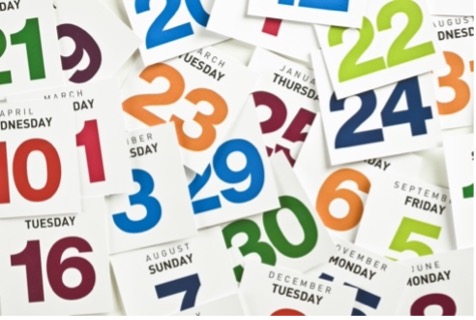
Buena Coastal Championships
Saturday, March 9th – Sunday, March 10th
Ventura Comm. Park Aquatics, 901. S. Kimball Rd., Ventura, CA. 93004
Groups: All that qualify– HIGH SCHOOL SWIMMERS PLEASE CHECK IF YOU NEED TO REPORT AS UNATTACHED FOR THE MEET
SCS Age Group Spring Champs
Thursday, March 14th – Sunday, March 17th
Rose Bowl Aquatics Center, 360 N. Arroyo Blvd., Pasadena, CA. 91103
Groups: All that qualify

